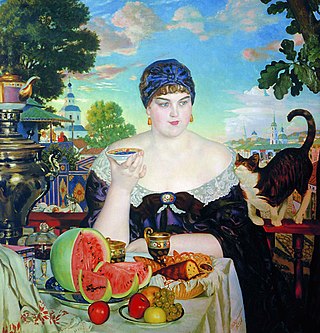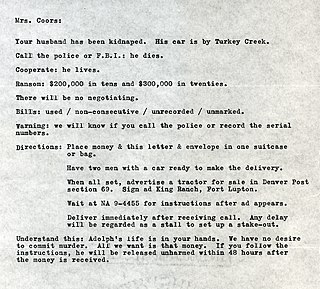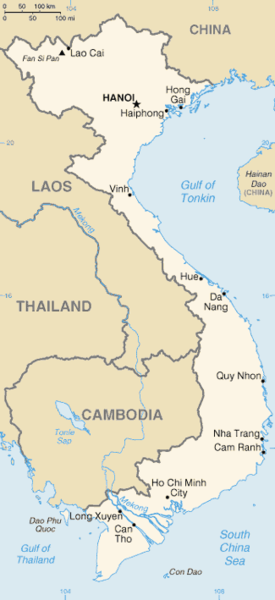
A wife is a woman in a marital relationship. A woman who has separated from her partner continues to be a wife until their marriage is legally dissolved with a divorce judgment. On the death of her partner, a wife is referred to as a widow. The rights and obligations of a wife to her partner and her status in the community and law vary between cultures and have varied over time.
A mail-order bride is a woman who lists herself in catalogs and is selected by a man for marriage. In the twentieth century, the trend primarily involved women living in developing countries seeking men from more developed nations. Men who list themselves in such publications are referred to as "mail-order husbands", although this is much less common. As of 2002, there were an estimated 100,000–150,000 mail order brides worldwide.
A dowry is a payment, such as property or money, paid by the bride’s family to the groom or his family at the time of marriage. Dowry contrasts with the related concepts of bride price and dower. While bride price or bride service is a payment by the groom, or his family, to the bride, or her family, dowry is the wealth transferred from the bride, or her family, to the groom, or his family. Similarly, dower is the property settled on the bride herself, by the groom at the time of marriage, and which remains under her ownership and control.

Bride kidnapping, also known as marriage by abduction or marriage by capture, is a practice in which a man abducts and rapes the woman he wishes to marry.

Dower is a provision accorded traditionally by a husband or his family, to a wife for her support should she become widowed. It was settled on the bride by agreement at the time of the wedding, or as provided by law.

Marriage in Korea mirrors many of the practices and expectations of marriages in other societies. Modern practices are a combination of millennia-old traditions and global influences.
The increasing number of Asian migrant brides in Japan marrying Japanese men is a phenomenon occurring in both rural and urban Japan. Since the mid 1980s, rural Japanese men have begun taking foreign Asian brides, from the Philippines, Sri Lanka, Thailand, China and South Korea, as a way of compensating for the reduced number of Japanese women of marriageable, childbearing age who are willing to marry rural Japanese men. The phenomenon later spread to urban parts of Japan as well. The phenomenon has created a new industry of foreign marriage brokering that uses both local governments and private organizations to facilitate the immigration of foreign brides. This is largely a result of an aging population in Japan where approximately 20% of the population is over the age of 65, which is exceptionally high, a fertility rate of only 1.3, and increased opportunities for women and increased costs in child care.
Vietnamese migrant brides in Taiwan represent marriages between Taiwanese men and Vietnamese brides who are mostly from poor, rural areas of Vietnam, such as those along the Mekong Delta. As of 2006, out of Taiwan’s immigrant population of approximately 428,240 people, 18% were females who had relocated to the country through marriage. Out of this population, about 85% originated from the Southeast Asian countries of Vietnam, Indonesia, Thailand, and Philippines, with the majority hailing from Vietnam. It is estimated that between the years of 1995 and 2003, the number of Vietnamese women married to Taiwanese men increased from 1,476 to more than 60,000 individuals, making the Vietnamese the largest non-Chinese immigrant group living in the island. This event has been seen locally and abroad as something that can potentially evolve into a concerning societal and humanitarian issue. This issue is not just localised in Taiwan but also in Southern China provinces as well as Hong Kong and Macau. In every case, these practices are illegal and are classified under human trafficking.

Wife selling is the practice of a husband selling his wife and may include the sale of a female by a party outside a marriage. Wife selling has had numerous purposes throughout the practice's history; and the term "wife sale" is not defined in all sources relating to the topic.

China is a main source and also a significant transit and destination country for men, women, and children who are subjected to trafficking in persons, specifically forced labour and forced prostitution. Women and children from China are trafficked to Africa, Europe, Latin America, the Middle East, and North America, predominantly Taiwan, Thailand, Malaysia, and Japan for commercial sexual exploitation and forced labour. Women and children from Myanmar, Vietnam, Mongolia, former USSR, North Korea, Romania, Indonesia, Nepal, Pakistan, and Ghana are trafficked to China for commercial sexual exploitation and forced labour.

The role of women in Vietnam was subject to many changes throughout the history of Vietnam. They have taken on varying roles in society, and the country has seen a number of advances in women's rights, such as an increase in female representation in government, as well as the creation of the Vietnam Women's Union in 1930.
The Cecily Jordan v. Greville Pooley dispute was the first known prosecution for breach of promise in colonial America and the first in which the defendant was a woman. This case was tried in the chambers of the Virginia Company, and never went to a civil court, for the plaintiff withdrew his complaint. The first successful case was Stretch v. Parker in 1639.
The dowry system in India refers to the durable goods, cash, and real or movable property that the bride's family gives to the groom, his parents and his relatives as a condition of the marriage. Dowry is called "दहेज" in Hindi and as جہیز in Urdu.

Bride price, bride-dowry, bride-wealth, bride service or bride token, is money, property, or other form of wealth paid by a groom or his family to the woman or the family of the woman he will be married to or is just about to marry. Bride dowry is equivalent to dowry paid to the groom in some cultures, or used by the bride to help establish the new household, and dower, which is property settled on the bride herself by the groom at the time of marriage. Some cultures may practice both simultaneously. Many cultures practiced bride dowry prior to existing records.
Bride buying in India is the practice of forced arranged marriages through human trafficking. Brides are commonly referred to as "paro" or "molki" within this framework. The brides are sold by their parents to human traffickers who transport and sell them within relatively wealthier regions of Northern India. The desire for a male child and subsequent female infanticide has resulted in a significantly lowered sex ratio within India, creating an abundance of unmarried men in Haryana, Punjab, Rajasthan, and Western UP. These men resort to purchasing inter-region women from impoverished communities mainly to continue their family lineage. The key motivation for low-income families to sell their daughter is to receive financial compensation and avoid having to pay a dowry. Major sources are the impoverished parts of Northeast India (Assam), Bihar, Jharkhand, Odisha, West Bengal, and Andhra Pradesh.
The history of international marriage of Vietnamese women was rooted during the colonial period and Vietnam War, where there were Vietnamese women who married Europeans and Americans. The issue is controversial. Some of them have married Viet Kieu men in the west and faced the problem of diaspora marriage, but nevertheless were people who were not culturally nor racially distant, whilst some have married people from other backgrounds, which is far more controversial. The largest amount of international marriage of Vietnamese women attracted attention in the respect of the reasons for international marriage, the living conditions in destination countries and the images of these Vietnamese brides. In almost all cases, the "Vietnamese mail-order bride" is an illegal and unethical business that is a violation of human rights. Human and sex trafficking are related criminal offenses. International marriage has often been viewed as taboo since its perception of linkages with colonialism, exploitation, and differences in cultural and racial background. Although such marriages may be seen as breaking down racial and cultural barriers, the children of such marriages, especially if they are from very divergent cultural backgrounds, will fit into none of their parent societies, only being called the derogatory "halfie" or "người Lai" and may be seen as less than human or not normal due to their diverse and multicultural background. There is also a sense of pervasive and unwelcome gender imbalance where Vietnamese women were more likely to marry out then Vietnamese men. Gender equality is a difficult subject to discuss but nevertheless is a area of concern.
Sex trafficking in China is human trafficking for the purpose of sexual exploitation and slavery that occurs in the People's Republic of China. It is a country of origin, destination, and transit for sexually trafficked persons.

Sex trafficking in Vietnam is human trafficking for the purpose of sexual exploitation and slavery that occurs in the Socialist Republic of Vietnam. Vietnam is a source and, to a lesser extent, destination country for sexually trafficked persons.
Transnational marriages in the Sino-Vietnamese border areas of China have rapidly increased since the re-opening of the border in the 1990s. In the Sino-Vietnamese border areas, the building of intimation relationship is usually between a Chinese man and a Vietnamese woman. Historically, transnational marriages were common due to unclear state and ethnic boundaries in border areas. In the modern era, the formation of transnational marriages here is multifold. Thereinto, imbalanced economic development in border areas of China and Vietnam is one of the most significant incentives.
Many North Korean women fall victim to human trafficking upon migrating to the neighboring country of China. North Korea's discrimination of women in the workforce, the traditional familial view of women as a burden, and the region's ever-increasing poverty serve as factors that motivate them to migrate to their neighboring country to find a better life. China's one-child policy decreased the amount of women in the country, growing the demand for trafficked sex workers and brides. As of 2020, an estimated 80% of North Korean defectors were women, 60% of whom were sold in China's extensive human trafficking network. Women and girls who are trafficked are bought by cybersex brokers, sold into marriage, and forced into prostitution. As of 2023, there are up to 500,000 such women and girls in China's northern provinces of Jilin, Liaoning, and Heilongjiang, where human trafficking industry exploded, reaching $105 million per year. North Korea's punishments for defectors and China's lack of legal protection for North Korean refugees force women to withstand abuse to avoid facing deportation.








